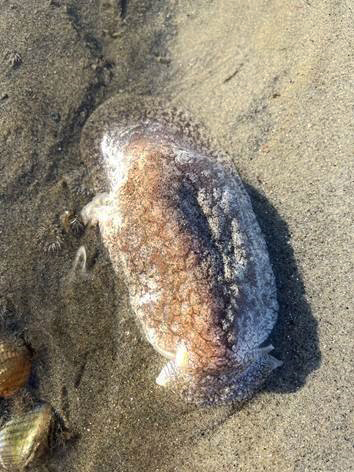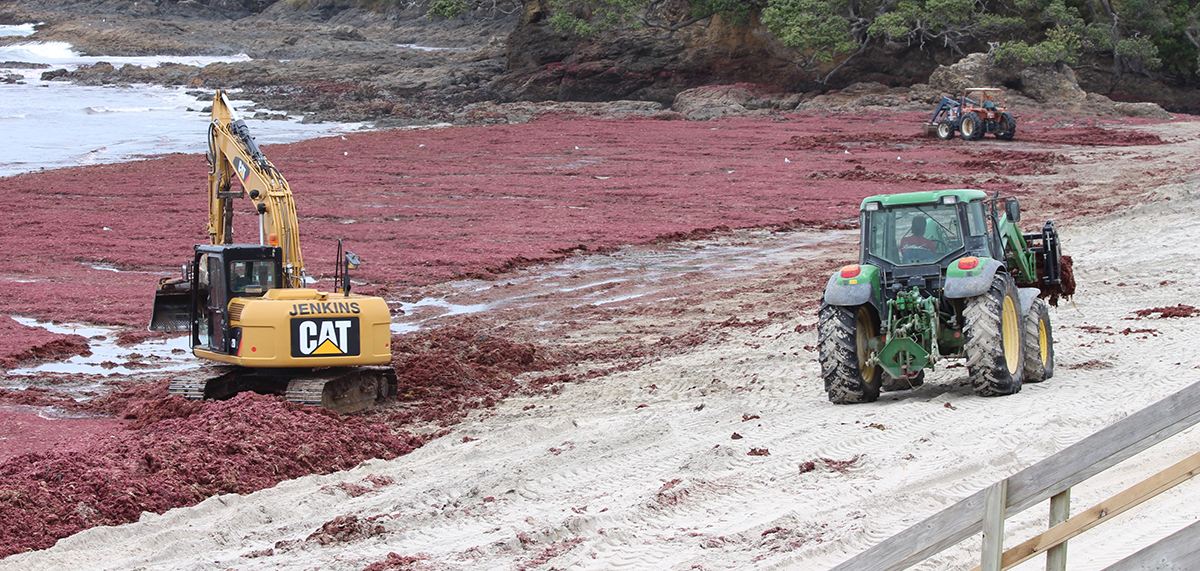What could you see in the sea this summer?
21 Dec 2022, 3:46 PM
Summer is here and for many that means plenty of time spent in, on or by our beautiful moana. There’s a whole host of wonderful and weird creatures to come across in the sea around Te Taitokerau – some more friendly than others. Here’s a few to look out for.
Jellyfish
Jellyfish blooms are becoming more common, as rising sea temperatures increase their food supply. Jellyfish are primeval invertebrates, so these bizarre but fantastic creatures have no bones, heart or brain, but still catch prey, reproduce and defend themselves.
Lion’s mane, moon jellyfish, blue bottle and spotted jellyfish are the most common species in the sea around Northland.
Not all jellyfish are stingers, but if you should get stung then the Ministry of Health advice is to get out of the water and wash the area with sea water to remove stinging cells. If any tentacles remain, use a dry towel to carefully remove them, then immerse the area in heated tap water for 15-20 minutes. Don’t urinate on it! Despite this being a widely-held belief, it won’t help and might make the pain worse.
Red Algae
Residents and holidaymakers at Waipū Cove know all about red algae. It grows on the surface of the sea and is then washed to shore by waves and the tide. It can form a thick mat, which looks unpleasant and smells even worse. At Waipū Cove the algae accumulates at the southern end of the beach, near the surf club and the car park, unfortunately where beach use is highest.
Micro algae and seaweed blooms occur throughout New Zealand and the red algae is not believed to be dangerous to humans or animals.
NRC has commissioned a report from NIWA on the algae, submitting samples, responses to questionnaires, reports and photographs from members of the public and this is available to download: Report - Macroalgae at Waipu, Northland (PDF, 5.8MB)
Toxic Sea Slug
 A toxic sea slug (Alison Stewart photo).The grey side-gilled sea slug (Pleurobranchaea maculate) is a highly poisonous native creature that can be found around the intertidal zone. During summer they can lose their grip on shallow tidal rocks and get washed up onto the beach. In January 2021 a toxic sea slug was spotted on Russell’s Long Beach and they have been found in Tauranga and in the Huaraki Gulf every summer since 2009.
A toxic sea slug (Alison Stewart photo).The grey side-gilled sea slug (Pleurobranchaea maculate) is a highly poisonous native creature that can be found around the intertidal zone. During summer they can lose their grip on shallow tidal rocks and get washed up onto the beach. In January 2021 a toxic sea slug was spotted on Russell’s Long Beach and they have been found in Tauranga and in the Huaraki Gulf every summer since 2009.
The slugs contain tetrodotoxin, the same poison found in puffer fish, which is deadly to humans. One slug can contain enough toxin to kill at least four adults, a lethal dose being about half a teaspoon. Dogs are at risk if they eat or lick slugs washed up on the beach and several dogs have died after doing so. The slug is grey, slimy and up to 10cm in size. If you see one on the beach, don’t touch it and be sure to keep your dog on a leash.
Stumpy
Have you come across the legendary Stumpy? This beautiful, friendly stingray cruises the shoreline around Tutukākā and is known for his inquisitive nature and his missing tail. No-one knows who called him Stumpy, but everyone knows that’s what he’s called! A perfect example of a local legend, look out for him around Tutukaka Marina if you’re on the water. He might approach you, as he’s very curious, but don’t try to touch him.
If you’re wondering what else might be in the water, head to Safeswim, the new way NRC delivers water quality information. You can access up-to-the minute water quality predications and swimming conditions at your favourite swimming spots around Northland, including patrol hours at Surf Lifesaving beaches. This invaluable resource can be found at www.safeswim.org.nz so you can make informed choices on where to be in the sea this summer.

Red algae on Waipu Cove beach in 2016.
